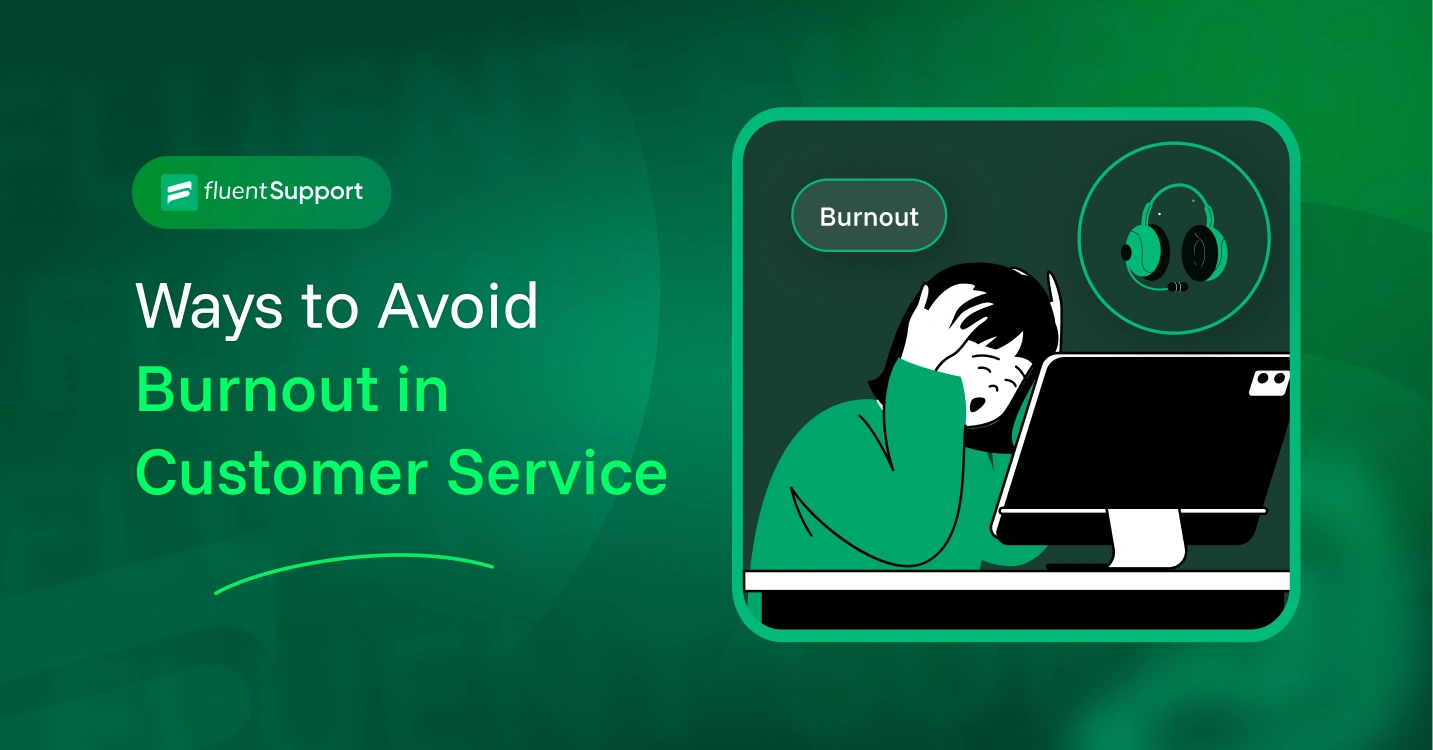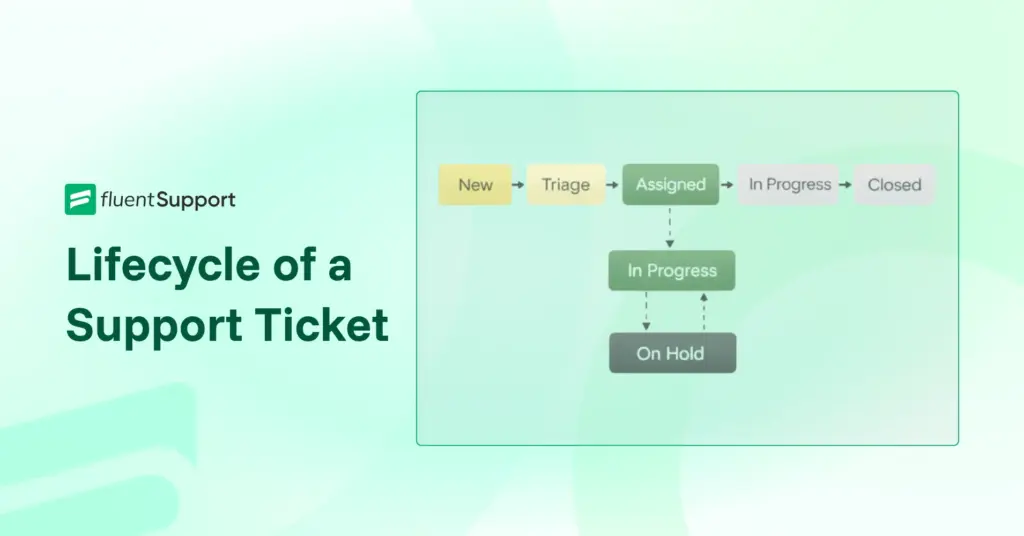
Avoid Burnout in Customer Service: 6 Proven Methods
By Prosanjit Dhar
August 13, 2024
Last Modified: November 13, 2025
Each day is a new challenge for every customer service agent. Different customers, different issues, but the workload remains the same.
Agents can go through these periods as it’s part of their everyday job. However, there are times when customer pressure piles up and they end up mentally exhausted or burn out.
What is customer service burnout?
Customer service burnout is a state in which support agents feel mentally and physically exhausted due to constant stress, heavy workloads, or dealing with demanding customers.
Today, we’ll discuss how you can overcome this customer service burnout and start each day with a joyful attitude.
Why burnout happens in customer service
Customer service is one of the toughest jobs in the world. Agents interact with all kinds of customers, and not everyone is easy to deal with. It’s almost certain that they’ll encounter an unhappy customer once a day.
Also, the high volume of tickets creates constant pressure in the agents’ minds. This combination makes burnout a prevalent issue in customer service.

“Burnout happens, but could be mitigated with proper distribution of works and by encouraging agents for the positive reviews they got.”
Md. Kamrul Islam
Head of Technical Support at WPManageNinja LLC
Let’s explore why burnout is so common in customer service.
Pressure to meet daily expectations
Salesforce states, “84% of customers say the experience a company provides is as important as its products or services.”
Every customer expects agents to be personalized, understanding, and quick. This constant demand of customer expectations creates a lot of pressure on the support agents.
Managing a constant flow of tickets
Customer service is a never-ending line of people asking for help. Before you finish helping one customer, there are two more who need assistance.
Over the year ticket flow of a customer support:

As businesses grow, this pressure on support agents mounts and requires continuous enhancement in agent performance. And, this constant push of tickets creates mental exhaustion or burnout.
Automate your customer support with Fluent Support’s workflows and automations
Emotional strain of difficult interactions
While some customers are pleasant and understanding, others can be demanding, rude, or even abusive.
And, this mental hardship makes it harder for agents to maintain a positive attitude all over the day.
Easily gauge how customers feel by analyzing the tone of their messages.
Now that you know the common causes of burnout, let’s explore how to prevent it.
Ways to avoid burnout in customer service
According to the World Health Organization (WHO), burnout is an “occupational phenomenon.” While it’s not officially a disease, it can lead to serious medical issues, including anxiety, emotional stress, and other related disorders.
But if you learn to tackle them, your life as a customer service agent can be joyful.
1. Understand the common signs
Dr. Tara Narula, a cardiologist at Lenox Hill Hospital, has suggested some signs of burnout that lead people to mental stress and disorders.
Note: One of these signs alone may not indicate burnout. However, if you notice multiple signs in one individual, it could be a cause for concern.
- Fatigue: A key sign of burnout is exhaustion. When stress builds up, it drains your body and mind and leaves a constant tiredness in your body.
- Mental detachment: Feeling mentally disconnected from your job is often a sign of burnout. You might become negative or cynical about your work.
- Cynicism/pessimism: People feel they are not professionally efficacious and become negative towards work or colleagues.
By recognizing the signs, individual agents or the entire team can take proactive steps to avoid it.
2. Proactive training and coaching
Onboarding in customer service isn’t just about learning rules and regulations. It’s about mastering the skills of managing customer support.
- Customer interaction training: Equip your agents with the skills to handle various customer scenarios, including managing difficult conversations and intense situations.
- Technical skills training: Ensure agents are well-versed in the tools and technologies they’ll use daily, enabling them to solve problems efficiently and confidently.
- Stress management training: Teach techniques to manage stress and maintain mental well-being, helping agents stay balanced and focused even under pressure.
- Team-based training: Foster collaboration and support among team members, promoting a cohesive environment where employees feel valued and supported.
3. Expertise-based product distribution
Stress often arises when agents lack proper knowledge about the assigned products. That’s why it’s important to assign support agents to products or sectors they are specialized in.
This approach can help reduce stress and increase their interest in their work.
4. Organized workloads
Since the volume of support tickets can vary each day, it’s important to actively manage this distribution to avoid overloading any single individual.
Use automations and workflows to minimize daily tasks and save replies for daily recurring issues. An organized helpdesk system can assist you in balancing workloads effectively.
5. Know when to pause

“The violence of positivity does not deprive, it saturates; it does not exclude, it exhausts. That is why it proves inaccessible to unmediated perception.”
Byung-Chul Han, The Burnout Society
In The Burnout Society, the famous philosopher Byung-Chul Han warns that constant positivity doesn’t necessarily uplift us; instead, it overwhelms and exhausts us.
So, it’s important to recognize when you’re feeling saturated and take steps to recharge. In this case, the 20-20-20 rule can be a great practice.
It says,

And lastly, celebrate!
6. Celebrating wins and positive feedback
Celebrations are one of the crucial parts of our lives. It boosts morale and the value of hard work.
Make it a habit to acknowledge both individual and team successes, whether it’s resolving a challenging case or receiving positive feedback from a customer.
Even a simple compliment can help agents to stay motivated, particularly in customer service, where negativity from customer complaints can be prevalent.
Wrapping up
Customer support agents face tough challenges and deal with numerous issues daily, leading to mental exhaustion and burnout.
However, to ensure high-quality service and customer satisfaction, proactive and well-supported customer support agents are crucial.
The success of the entire customer service industry relies on these support agents. Prioritizing their mental health and well-being is essential. If burnout isn’t mitigated, it can negatively impact the company.
Start off with a powerful ticketing system that delivers smooth collaboration right out of the box.












Leave a Reply